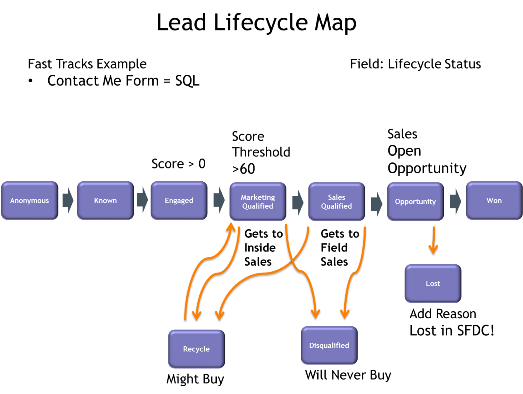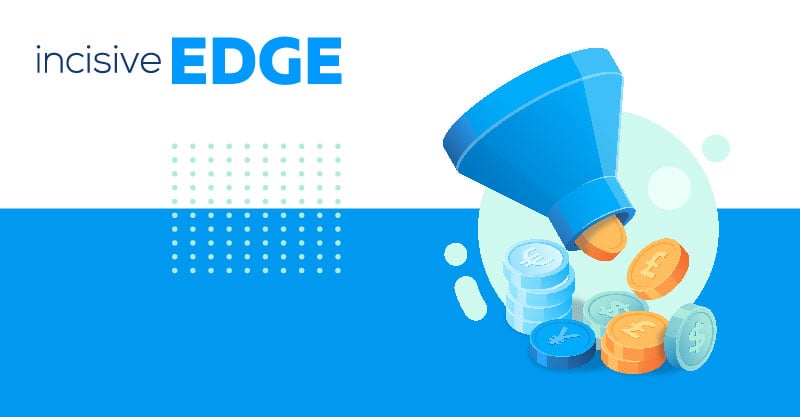Like an egg becoming a caterpillar becoming a pupa becoming a butterfly, so too do our leads embody many different forms throughout their lifecycles.
However, though it’s perhaps relatively easy to tell a cluster of insect eggs on a leaf from a beautiful red admiral butterfly flitting past on a summer’s eve, lead lifecycle management and identification are slightly more complicated.
But first, let’s consider what the lead lifecycle actually is and why it’s valuable from an inbound marketing perspective.
What Is the Lead Lifecycle?
Lead lifecycles are what inbound marketers use to determine and manage the life of a lead from the moment it first appears to the moment it becomes a paying customer (and beyond, actually).
The lead lifecycle stage determines exactly where each lead is along the buyer’s journey each lead is, and therefore what inbound marketing tactics must be deployed in order to move the lead along to the next stage of the journey.
Companies use lead lifecycles for a number of important reasons:
- For the strategic deployment of highly targeted content
- To prevent marketing qualified leads (MQLs) and sales qualified leads (SQLs) from slipping through their fingers only to be snapped up by a more organised competitor
- To create reports on conversion rates through each stage of the lifecycle (and thereby identify which stages are performing well, and which need to be strategically revisited)
- · To keep both marketing and sales teams organised in regards to the next steps
Not Every Company’s Lead Lifecycle Will Be the Same
At some companies, it will be quite possible for caterpillars to suddenly sprout wings and flutter away as fully-formed butterflies without first having to incubate in a chrysalis.
As such, it will be down to the individual marketing (or sales and marketing) department(s) to decide exactly how many lifecycle stages there need to be. But, decide these teams must, for it is essential to know the following:
- Which leads have received which marketing materials (if any)
- Which leads need to be passed from marketing onto sales
- Which leads are no longer leads but full-winged paying customers
How to Determine Your Lead’s Lifecycle Stage
The lead lifecycle is a great way to segment contacts, and from there deliver highly-targeted and personalised inbound marketing materials.

(Image source: business2community.com)
There’s no magic wand that will determine at which lifecycle stage your leads are at – and so, what we need to do is understand the definitions and the differences of each lifecycle stage. As mentioned above, the lead lifecycle at your own company may not have every single stage outlined below, and indeed what qualifies as an MQL distinctly from an SQL is often open to certain amount of interpretation and subjectivity.
What follows below are Lifecycle Stage definitions that you may use as a starting point.
Subscriber
Subscribers are those leads that have shown only the smallest possible interest in your materials. They have subscribed to your blog or your email newsletter and you have their details in your customer relationship management database, thus giving up their name and email address, but have proffered nothing else. Subscribers must be viewed with a long-term nurturing strategy in mind, for these guys and gals are just eggs on a leaf, and need a lot of TLC if they are going to be guided all the way through infancy then maturity to the full glorious butterfly stage of becoming a paying customer.
Lead
Leads have developed a little further than subscribers, though still shouldn’t be targeted too aggressively. Your leads have given away more information about themselves than just their email address – usually in exchange for a piece of content such as an eBook that you advertise on your website.
Marketing Qualified Lead (MQL)
MQLs have shown an even stronger interest in what you’re offering than your regular leads have. These are your very hungry caterpillars that have an appetite for your content – though have still yet to express a proper and identifiable buying intent. Nonetheless, inbound marketing strategies can be devised to help you determine the difference between leads and MQLs. For example, those that download your product demos, buying guides and other middle-to-bottom-of-the-funnel-style content are indicating that they are on the cusp of making a purchase decision.

Sales Qualified Lead (SQL)
Here is the pupa stage – all that sales potential enclosed in a casing just about to burst open and become something much more beautiful. Or, in inbound marketing and sales terms, an SQL is a lead that the sales team has accepted is worthy of a direct sales push. This is the most precarious stage, and it will require great collaboration between marketing and sales to determine at exactly what point an MQL becomes an SQL. Close monitoring of this hand-over will help the marketing team create better qualified SQLs, and the sales team convert more leads into customers.
Customer
Here it is – that wonderful, dainty, colourful butterfly that you have nurtured all the way from an egg, through birth, through transformation, all the way to maturity. In other words – a fully-fledged paying customer.
Evangelist
The final stage of the lifecycle is the point where you not only have a butterfly, but a butterfly that sets forth to lay its own eggs, and thusly set up the lead lifecycle to begin all over again. To put it another way, evangelists are those that are active advocates of your business and your solutions. Not all customers will flower into true evangelists – but those that do will be vocal online, and, on their own terms, draw in new swathes of leads that will enter the lead lifecycle.
Lead Lifecycles and HubSpot
Inbound marketers that are interested in getting the most out of the lead lifecycle should turn to HubSpot.
HubSpot is an inbound marketing and sales platform that is used to automate and optimise practically every stage of the inbound and marketing sales process.
With HubSpot you are able to update profile information for every member of your contact list. You can then segment your contacts cleanly and clearly, and design inbound marketing campaigns specially tailored to your lead's lifecycle stage.










